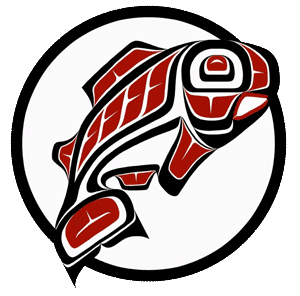Main Content
The Pacific Northwest (PNW) is often considered to cover the US States of Washington, Oregon, and Northern California as well as significant portions of British Columbia in Canada. This PNW region is renowned for its lush, temperate rainforests and diverse ecosystems even though these dense and towering forests are a relatively recent development on the ecological timescale. The forests of today owe their existence to a series of climatic and environmental shifts, primarily with the last glacial period around 13,000 to 10,000 years ago. These climate shifts along with the effects of the Cordilleran Ice Sheet, significantly shaped the region’s forests as can be seen by the rich biodiversity and the unique ecosystem that is present today.
Glacial Influence (13,000 - 10,000 years ago)
The Cordilleran Ice Sheet, a massive glacial body pushing southward during the last glacial period, profoundly shaped the PNW, particularly Washington State and the Puget Sound Region. Spanning from Alaska to the Northern United States, the ice sheet’s peak thickness exceeded a mile in certain areas which exerted immense pressure on the terrain and transformed it significantly as its movements sculpted valleys, fjords, and basins. During its eventual retreat, beginning around 13,000 years ago, meltwater floods were unleashed that further altered the landscape by contributing to the formation of fertile soils and distinctive glacial features like moraines and drumlins which also left a lasting imprint on the region's topography.
The retreat of the ice sheet dramatically influenced Washington’s hydrology and climate as it shaped major waterways such as the Puget Sound and sections of the Columbia River. Both of these features included crucial habitats and resources that prompted human settlements. The sediments and nutrient-rich soils left by glacial activity also fostered the growth of the dense coniferous and deciduous forests characteristic of the region. Other landscapes and diverse microclimates, from coastal rainforests to drier inland zones, were also created and still support a wide array of ecosystems and species that adapted to the post-glacial environment.
As the climate warmed, the Pacific Northwest evolved into a biologically rich and diverse region as the nutrient-laden soils encouraged the spread of iconic tree species such as Douglas Fir and Western Red Cedar. Meanwhile, glacially formed lakes and wetlands became havens for fish, amphibians, and waterfowl, while mammals like bears and elk thrived in the lush forests. The geological transformations introduced by the ice sheet provided the ecological framework for the thriving biodiversity that defines Washington State today.




The Warm and Dry Period (6,000 - 3,400 years ago)
Approximately 6,000 years ago, the Pacific Northwest experienced a climatic shift to a warmer and drier period as indicated by fossil records and sediment samples showing evidence of increased temperatures and lower rainfall levels. This change led to conditions which were significantly different from the cool and wet climate the region experiences today. During this period between 6,000 and 3,400 years ago, fires were much more frequent as evidenced by charcoal deposits suggesting that wildfires played a significant role in shaping the forest composition. Fire-adapted species thrived while less resilient species were reduced in abundance.
The frequent fires and drier conditions maintained a more open forest structure, allowing more sunlight to penetrate the forest canopy. This, in turn, fostered a mix of plant species, including grasses, shrubs, and early-successional trees, creating a mosaic landscape of forests interspersed with open areas. These fires were an integral part of the ecosystem that allowed for nutrient cycling and fostered biodiversity which prevented complete dominance by any single tree species. However, this period still favored coniferous trees with their thick bark and fire-resistant properties which adapted well to these conditions. The forests of this period lacked the lush density and towering canopy structure characteristic of the later PNW landscape we see today.
The Onset of a Cooler, Wetter Climate (3,500 years ago - Present)
Around 3,500 years ago, the climate of the Pacific Northwest began to shift once again. This time, the trend was toward cooler and wetter conditions, a pattern that would define the region's climate to the present day. With this shift came a decrease in fire frequency, as moist conditions made it more challenging for fires to ignite and spread, resulting in a more stable, fire-resistant environment. This allowed forests to grow denser and reach new heights, both literally and figuratively. Under these conditions, the PNW’s temperate rainforests reached their current state of biological richness and productivity with towering coniferous trees like the Douglas fir, western hemlock, western red cedar, and Sitka spruce flourishing, with many individuals reaching over 200 feet in height and surviving for over 500 years. Deciduous trees such as Bigleaf Maple and Red Alder also found a niche, resulting in an ecosystem marked by old-growth forests with multiple layers of vegetation including a thick canopy, midstory trees, an understory of shrubs and ferns, and a diverse array of mosses and fungi carpeting the forest floor.
These forests are unique on a global scale, as few regions outside the PNW have the right combination of temperate climate, high rainfall, and low fire frequency to support such expansive conifer-dominated forests. The Pacific Northwest's rainforests are distinguished by both their high biomass which are often considered the most productive forests outside of tropical rainforests and their role in global carbon storage.

